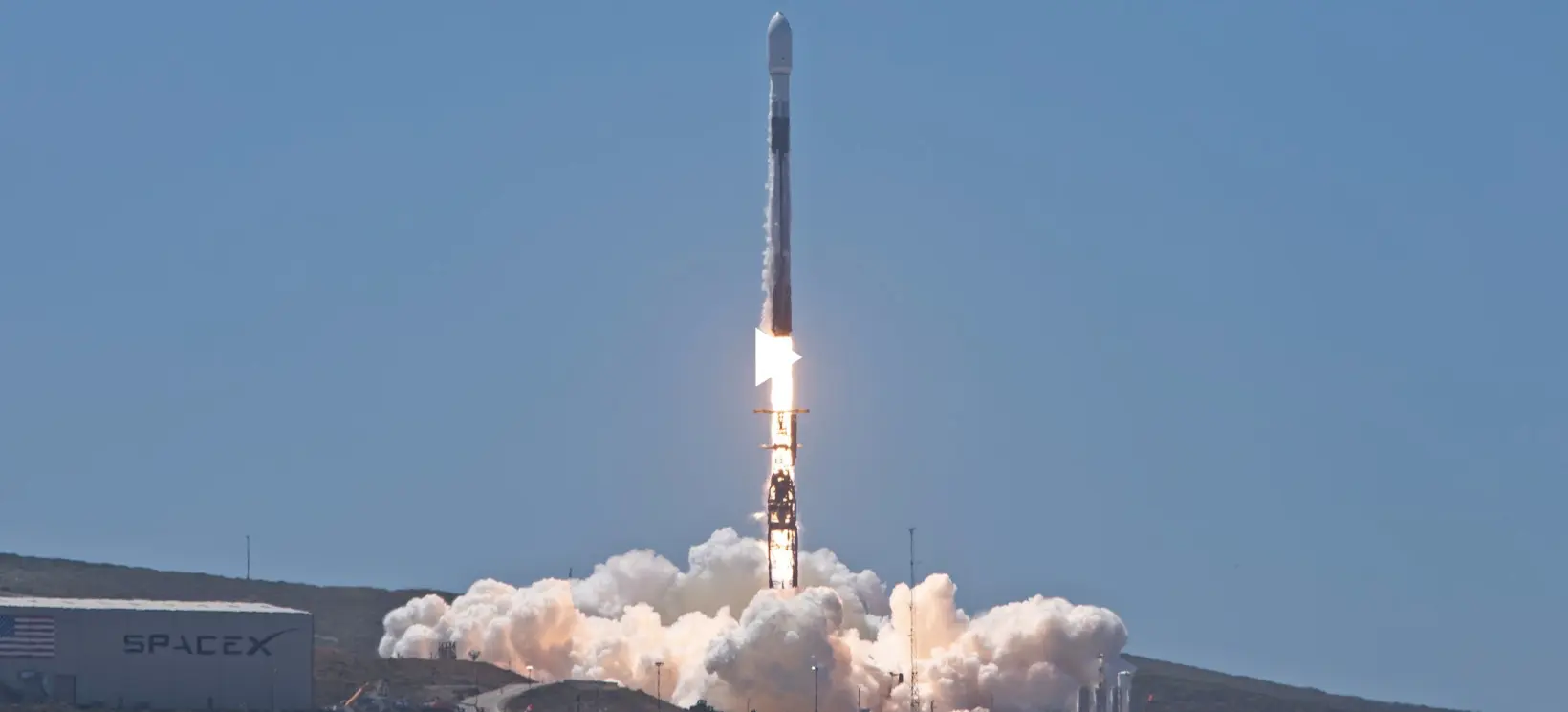
Three Australian CubeSats were among the 116 that hitched a ride into space on the weekend aboard a SpaceX Falcon 9 rocket.
CUAVA-2 and Waratah Seed from New South Wales, and Kanyini from Inovor Technologies were included in the Transporter-11 payload that lifted off from California’s Vandenberg Space Base shortly before 5.00 am, August 17, 2024 (AEST). The payloads ranged from nanosatellites weighing less than a kilogram to satellites weighing several hundred kilograms.
Around 60 minutes after lifting off, the satellites began launching. Payloads were deployed from the second stage into two Sun-synchronous orbits at approximately 510-520 kilometres and 590-600 kilometres. The first batch saw 69 launches, releasing 70 payloads. The second batch released 30 deployments containing 38 payloads. Five satellites were kept on board for later deployment. The exercise resulted in SpaceX notching up more than 1,000 deployments via its commercial rideshare program.
Iver Cairns, Professor in Space Physics and Director of the ARC Training Centre for CubeSats, UAVs, and their Applications (CUAVA), confirmed the successful launch of the CUAVA-2 and Waratah Seed CubeSats. “Both satellites are alive and well and communicating with us,” he posted on social media on the weekend. “Our focus now shifts to commissioning the satellites and accomplishing active communications. We envision this taking one month.”
CUAVA-2 is the second satellite CUAVA has put into space. It had two primary payloads onboard – a hyperspectral imager developed by the School of Physics at the University of Sydney and a GPS reflectometry payload developed by the Australian Centre for Space Engineering Research at the University of New South Wales.
Funded by the NSW government through their Space Industry Development program, Waratah Seed was Australia’s first rideshare mission and managed by CUAVA. Its payload included a spacecraft thermal management system developed by Mawson Rovers and the University of Technology Sydney; a space edge computer developed by Spiral Blue; a submillimeter particle detection system developed by the University of Sydney; and a Perovskites in Orbit ReadinessTest (PORT-2) payload designed by EurokaPower.
Adelaide-based Inovor Technologies’ 6U Kanyini CubeSat was developed for the South Australian Government’s Space Industry Centre. Onboard was the HyperScout 2 Flight Model hyperspectral imager and Myriota’s IoT space services device. The Myriota device will provide the data transfer capability for the AUD6.5 million satellite.
“The satellite’s dual IoT and imager payloads will deliver critical space data that will be used by government and research institutions, particularly in the areas of sustainability and climate impacts,” reads a South Australian Space Industry Centre statement. “This will help improve state services like emergency services, environmental and water quality monitoring and bushfire mitigation.”
South Australian Member for Morphett called Kanyini’s launch a “giant leap for the South Australian space sector, while the Australian Space Agency called it the three deployments a “big day for Australia’s space sector.”
The weekend’s launch was SpaceX’s 81st Falcon mission of 2024. Transporter-11 was the 11th flight since SpaceX temporarily grounded all Falcon flights following the failure of a Starlink mission on July 11. SpaceX has scheduled its next Transporter rideshare flights for November.





